Day 32 April 19
We reached the doldrums yesterday. The wind dropped to one knot and the sea became calm. The wind had been dropping steadily all day and we had turned on the engine earlier in the day. Without an engine we would have been stuck in that part of the ocean for several days, I am sure. But with the engine a couple of days of motoring took us the 150 miles to the other side.

The watch last night was very peaceful, no sails to constantly monitor, only a gentle swell, the boat was fairly vertical all night.
This morning the sea was glassy. I could understand Masefield’s poem The Ancient Mariner now. Late morning there were some wisps of wind ruffling the sea surface. Slowly the wind strengthened as we sailed into the trade winds and by lunchtime we had all sails up and were moving forward on both engine and sail power.
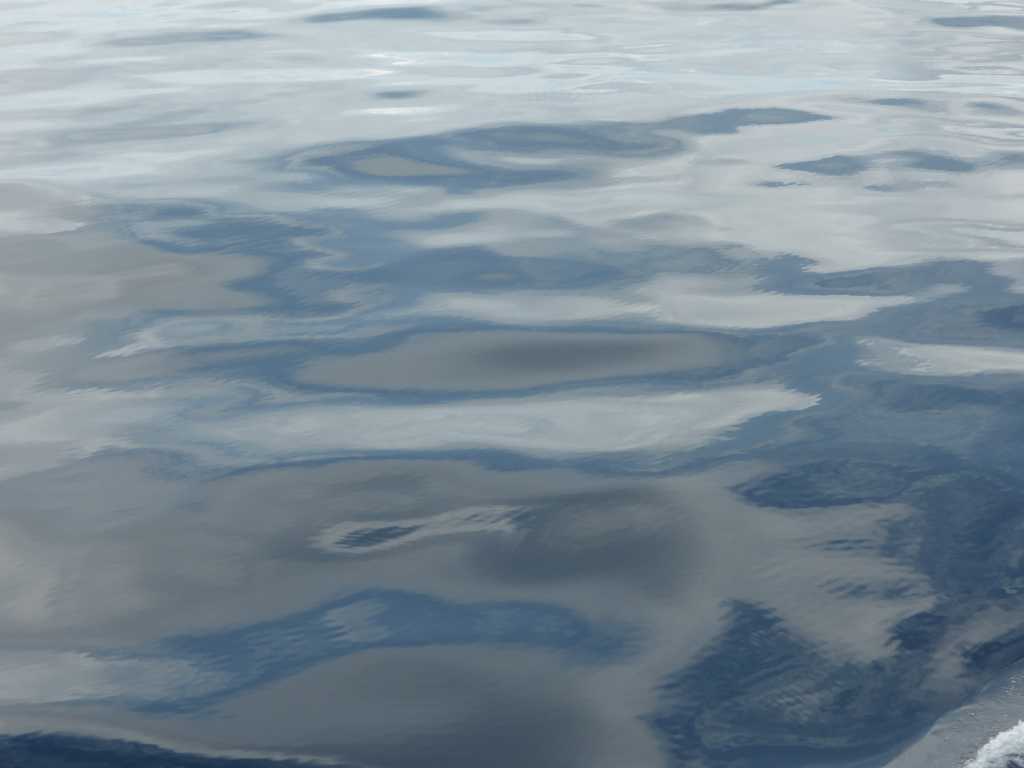
In the morning we spotted a few small dolphins that were moving as fast as we were through the water. They didn’t seem interested in us and as they were swimming south we didn’t follow them for very long.
Most days we put the Manta Trawl behind the boat for 30 minutes to collect plastic debris. Today’s collection was a few very small pieces of plastic and what looked like a length of dental floss.
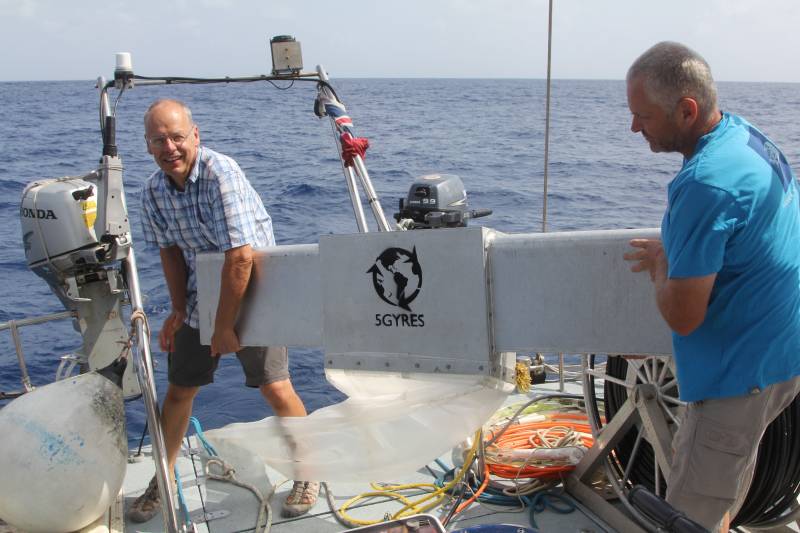
A spot of winch maintenance was carried out. Photos were carefully taken of each step on the dismantling process just in case it wouldn’t go back together again! Success. It works much more smoothly now all the bearings have been cleaned and greased.

Day 33 April 20
After crossing the doldrums the wind is now blowing in exactly the wrong direction. We are using the engine to head directly into the wind. In the past couple of days we have been above the mid Atlantic ridge where the sea floor rises from about 5,000 metres to 3,000 metres. We have sailed beyond that now and we did not spot any dolphins or whales all day until dusk when twenty or thirty small dolphins dashed past our bows. We turned to follow them but they were swimming quickly and were not interested in playing with us. They quickly outpaced us.
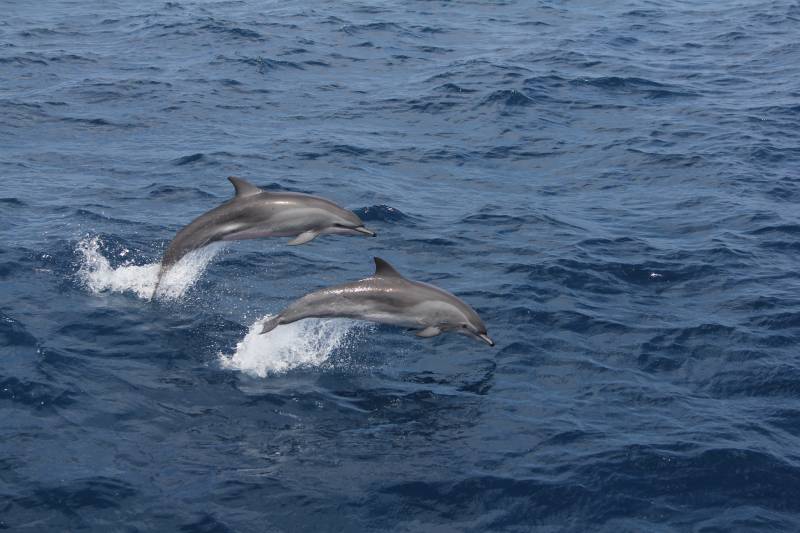
We passed today some Sargassum weed floating in clumps on the surface. This is the first time we have seen any seaweed. The weed is a habitat for shrimps and small crabs. We carried out a Manta trawl for plastics and our filter became blocked with the weed. We did think of drying it and using it for an exotic recipe but it seemed very tough. I think it would take a lot of boiling to make it edible.
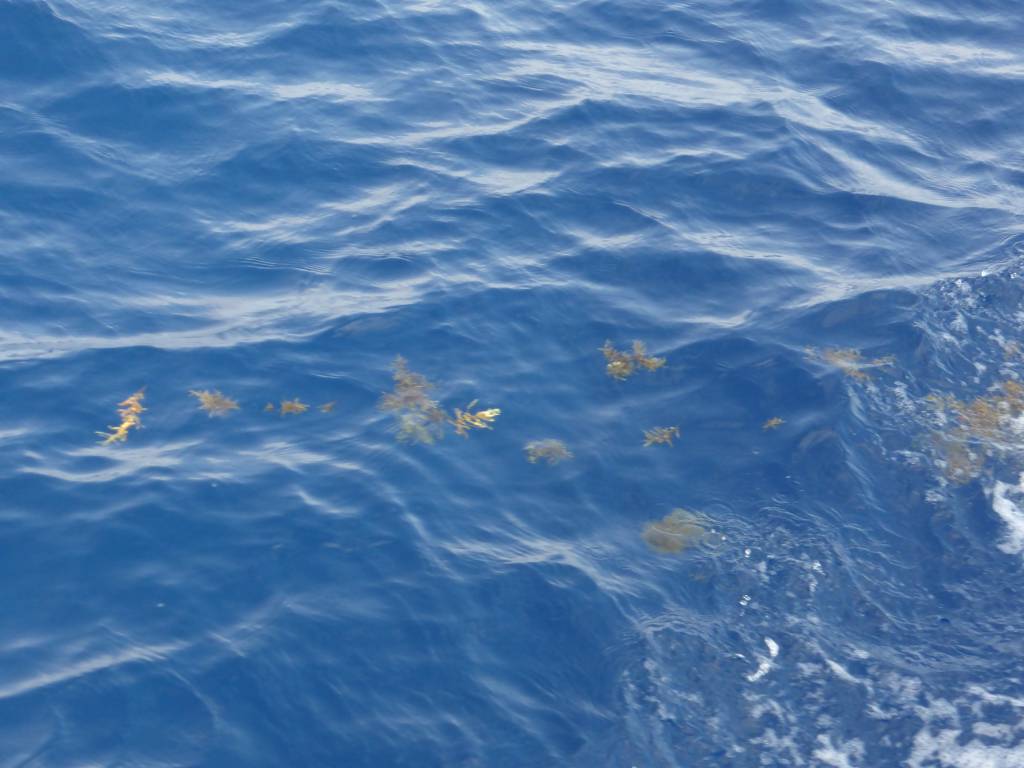
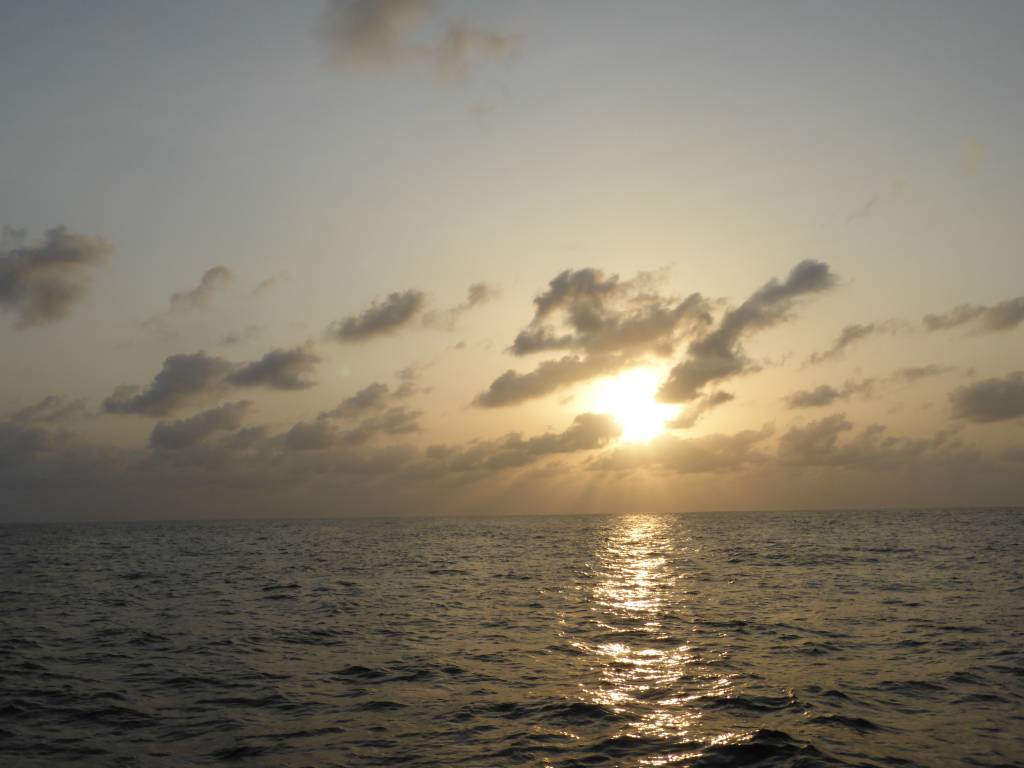
Sam’s AstroNav Blog
Sam has been taking advantage of the clear Atlantic skies to try to learn some astro Navigation while en-route to Portugal. Here describes astro navigation, which involves using the various celestial bodies in the sky to find out your position and was the way mariners would navigate around the world for centuries until the development of GPS on boats in the 1980s…. While now it might seem a little outdated since almost all boats carry multiple GPS units, it can still come in handy if the electrics onboard are damaged for whatever scary reason. With the GPS still intact on Song of the Whale for now, I’m learning simply because it’s interesting to think about the various different movements of the sun, moon, planets, and stars. Also, to make my night watches less like sitting in an unpredictably wobbly room in the dark, I’ve found looking at (and trying to recognise) the stars as an excellent way of staying awake.
There’s a lot of theory involved in this and trying to imagine everything in the sky moving at once can be a bit mind-boggling: in particular, the solar system can be a complicated place to replicate when you’ve only got two hands and an ever-dwindling supply of round fruits to try to model the universe with. (I think I speak for everyone here in saying that the boat should – at Richard’s soonest convenience – be kitted out with a full-size astrolabe).
So, what Astro Navigation involves is measuring the angle between the sun-moon-planet-star and the horizon and writing down both this and the exact time together. To measure the angle accurately you need a sextant – a smashing bit of engineering that makes you both look and feel the nautical boss. This works with all sorts of mirrors and lenses and twiddly bits that let you get the angle to the nearest degree, minute, and second.
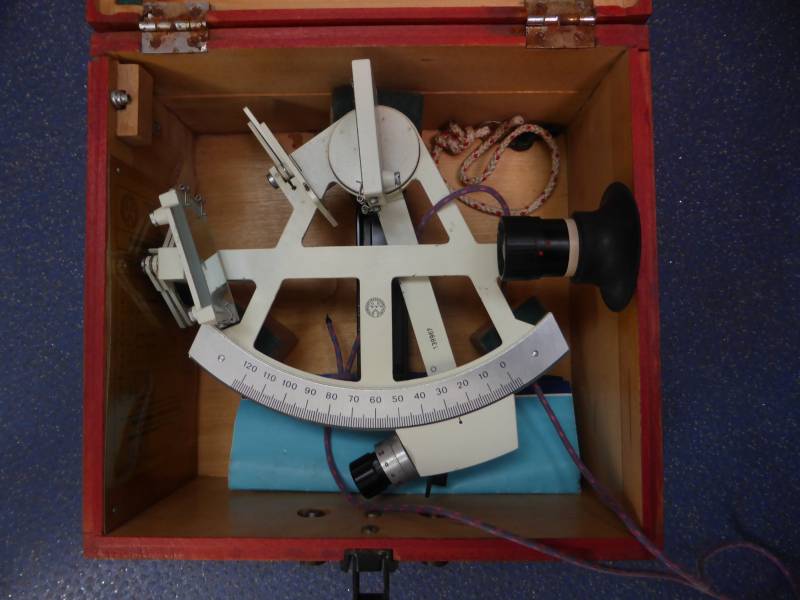
Armed with this information, you then consult various tables in navigational ledgers that can convert your angle and time into other, more confusing numbers. Repeat this last step a few times and you will eventually come out with numbers that can be converted into a position line that you can draw on a chart. With a few different position lines on the chart you can then see where these lines cross and bingo, you’ve created an impressive doodle of lines, arrows, dots, rubbings out, and miniature drawings of the sun. And somewhere in all of this is your position.
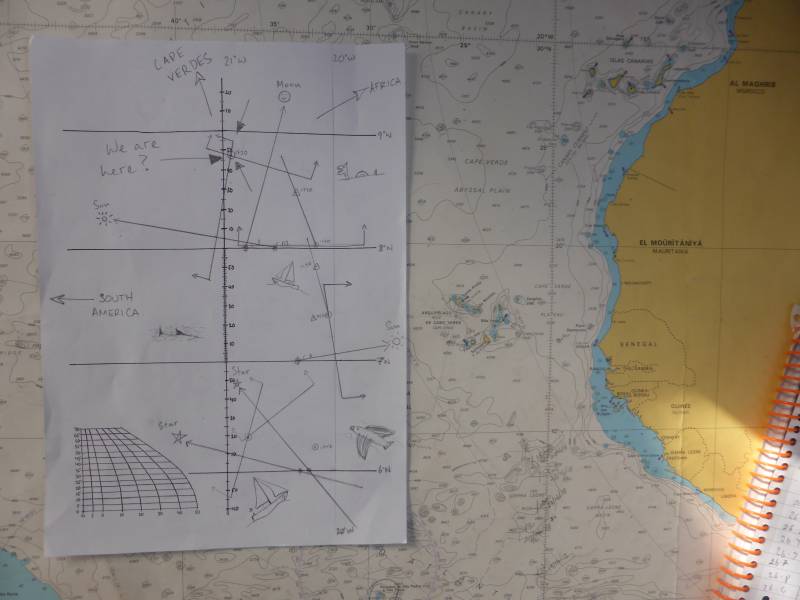
Fairly needless to say, my successes so far in this pursuit have been varied. My first attempt was approximately 600 miles out and plotted our position to be square in the middle of the Amazon Rainforest. Since then however, all subsequent positions have been calculated to be somewhere in the Atlantic Ocean. So I can only assume that I’m improving. Fortunately, the open ocean is a good place to make mistakes – the few things here to crash into allow for an impressively large margin of error. Even more fortunately, we’re not using my results for any sort of navigation whatsoever.
Day 35 April 22
The toilets on a boat are not called toilets. They are called Heads. They are intriguing places of both exercise and effort. The centre of attention is the lever at shoulder height. This lever is a manual pump that flushes the toilet with seawater. When at sea the flushings end up straight into the sea but when in port they are collected in a holding tank. To be avoided at all costs is allowing the holding tanks fill up when in port. So when at a Marina everyone is encouraged to use the Marina toilets. At our last port these were 440 paces away. It helps if you can plan ahead!
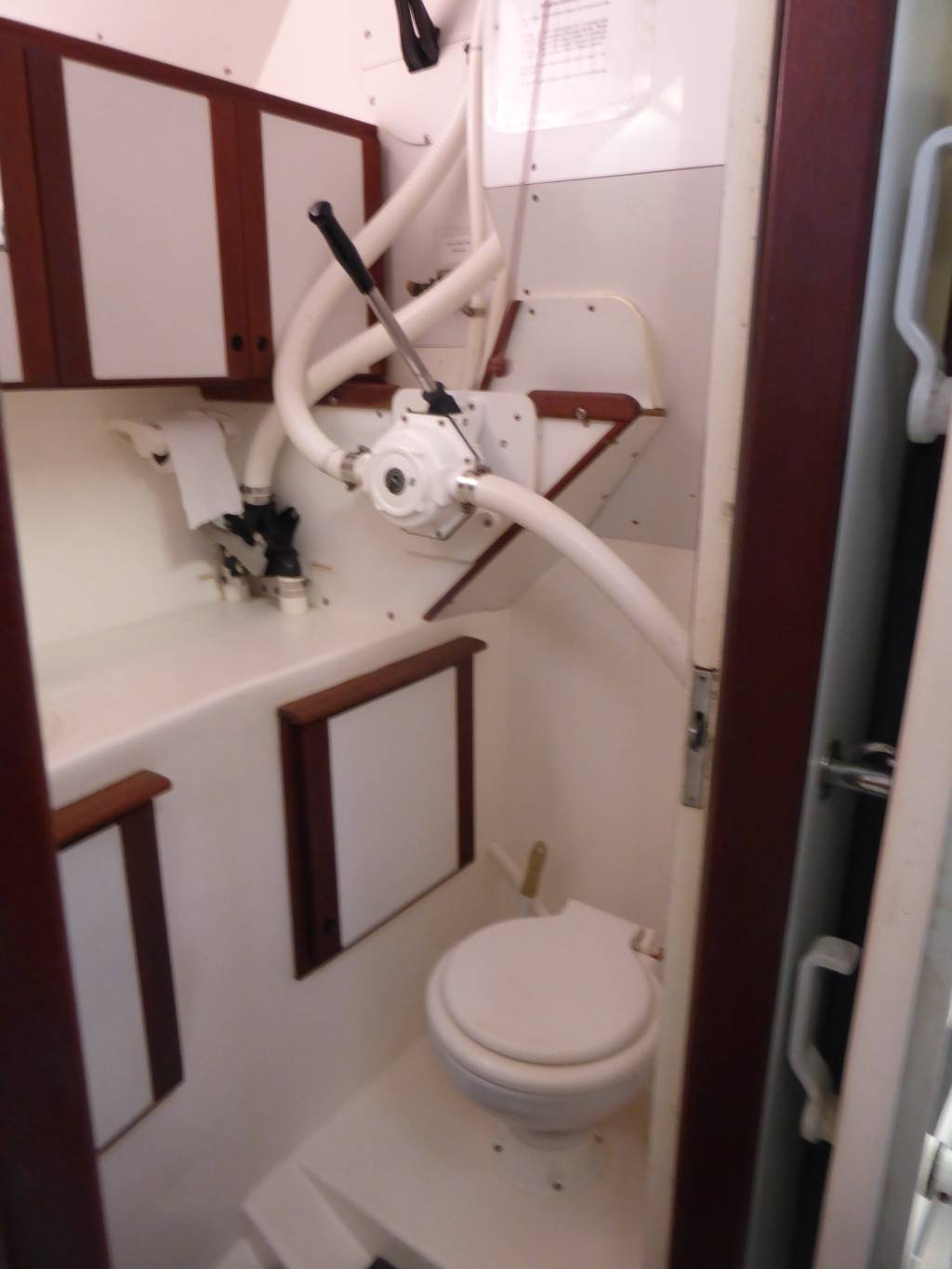
Back at sea when using the heads, in order to flush them the lever at shoulder height needs to be worked thirty times. This is where the exercise happens. The lever needs a bit of effort to pull and care needs to be taken to pump smoothly. If not, an airlock occurs. When this happens the contents of the pipe change direction.. It happened to me a couple of weeks ago. I’m not going to describe this any further.
I will however explain the meaning of a common phrase used everyday that originated in sea-faring days: On the old sailing ships people would do whatever they were going to do leaning over the edge of the deck and straight into the sea. There were no toilets. On a rope was fastened a piece of material that was permanently towed behind the boat. The action of the constant movement of the water kept it clean. When you had finished doing whatever you were doing over the side you pulled in the rope to get the piece of material at the end to wipe yourself. This is the derivation of the phrase ‘toe rag’. I guess it used to be spelled ‘tow rag’. The phrase is much more of an insult than I had ever realised! Be warned.
Day 37 April 25
We are back to living a sloping life. We have been beating to windward in 15knots for the past couple of days with the boat heeled over all the time.

Sometimes it heels more, sometimes it heels less, sometimes it lurches forward down a swell, sometimes it tilts back as it crests a swell. Life is difficult. Always, and I mean always, you have to have one hand on a handle to steady yourself. Just imagine trying to floss your teeth with just the other one hand. The most comfortable place on the whole boat is your bunk. We have stuffed the lower side with blankets or pillows and sleep comes blissfully easy. It is only when you have to become vertical that the struggle restarts.
Placing a mug or a bowl on a table is OK for a few seconds and then suddenly it slides away from you and over the edge. Even typing on a keyboard can be tricky as it slides sideways without warning.
The sea has been too rough today so we have not been up on the A frame looking for whales and dolphins. We have been carrying out the observation from the deck instead.
Hopefully tomorrow we might see some land – the southern end of the Cape Verde archipelago.
Roger.
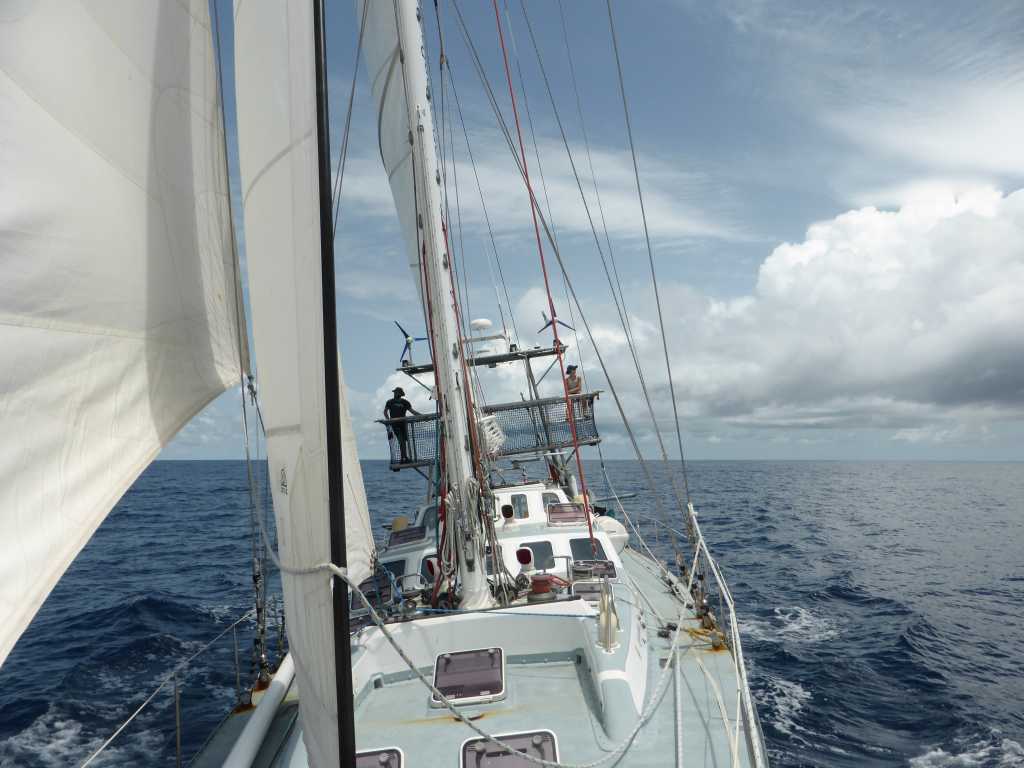
Niall, who joined the team in the Falklands, introduces himself and gives a quick update on the sea birds the team have encountered.
Leaving the Falklands only 2 months ago seems like a world away. I joined Song of the Whale as skipper on the 3rd of March and, under the patient guidance and expertise of Brian, was initiated into the intricate workings of the ships systems. For not only is Song a regular sailing boat for which I am used to, she is also a scientific research vessel (my initial draw to get involved with the team at MCR). This adds a little to the usual handing over process when new skippers take control of a boat. But Brian and Matt were always tolerant of my incessant questions (often repetitive) and were both very accepting and understanding during my induction on the way from the Falklands to Uruguay where Brian left us.
Song proved to be everything I remembered and expected her to be: strong, robust and sea kindly. Yet she still surprised me by being a bit “tweaky” for such a good natured working girl. Getting to know a boat is all part of a new skippers challenge and Song showed that a bit of playing (tweaking) with her lines, cars, traveller, kicker and out haul, we could increase our speed by sometimes up to 1.5 knots or point a few extra valuable degrees.
As a very amateur birder and photographer the trip has been an explosion of firsts for me. Seeing your first wandering albatross up close gliding effortlessly a few meters from your head is definitely all it is cracked up to be. But it’s not just the big albatrosses that are astounding; it’s the myriad of other seabirds that you don’t find at home that had me painstakingly pouring through the guide book to identify. Amongst my new collection – as well as four differing albatrosses (yellow nosed, black brown, wandering and royal) – I can add: fairy prions, white terns, giant petrels (both northern and southern), masked boobies, brown boobies, red footed boobies, white chinned petrel, Atlantic petrel and of course the charming brown noddy that would roost on the A frame or coach roof each evening while we were just below the equator. The usual suspects are also to be frequently found including; frigate birds, tropic birds, migrating artic terns, Wilson and leach’s petrels, great shearwaters, sooty shearwater, and Cory’s shearwater. I am confident that the remaining part of the trip will be as productive, biologically, as it has been thus far.
The crew, too, have been exceptional, a fantastic junk of personalities that work well together and where nothing is too much trouble, learning quickly and gelling into a great sailing team. Away from the clutches of modern communications the cock pit abounds with stories, information, songs and laughter. I couldn’t wish for more agreeable group of people to spend an ocean voyage with!
We are currently motoring into a stiffening north breeze. The wind is expected to veer and so I hope to be able to unfurl a bit more sail later on, ease a bit to the west and allow Song to pick up her rail and skip up on the beat. A quick fuel stop and some fresh fruit and veg at the Cape Verde islands and we will be off on a glorious fast reach over azure blue waves to the Azores!
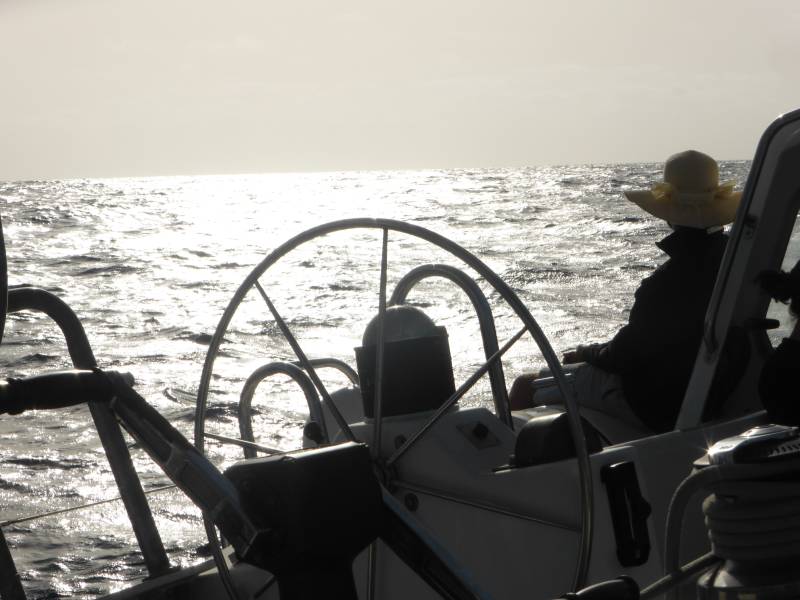
Sorry, comments are closed for this post.